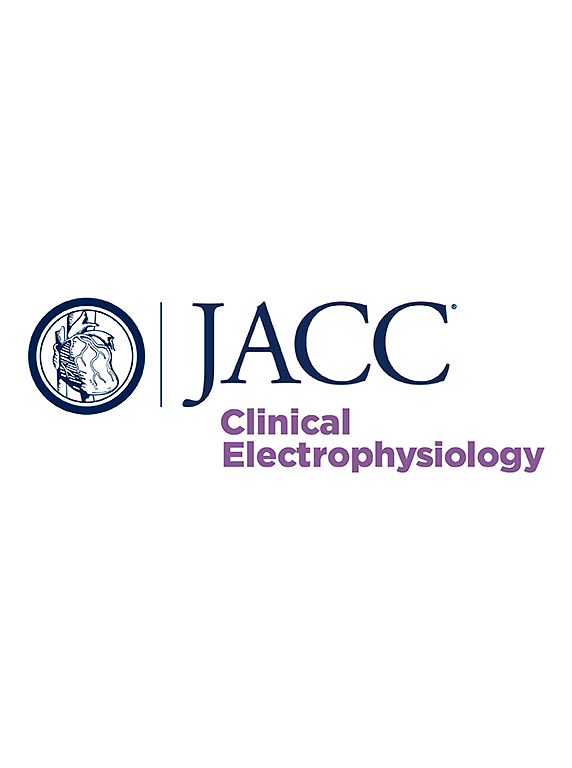High-Power Short-Duration Radiofrequency Application for Faster and Safer Pulmonary Vein Isolation
IF 8
1区 医学
Q1 CARDIAC & CARDIOVASCULAR SYSTEMS
引用次数: 0
Abstract
Background
The optimal radiofrequency application (RFa) parameters for safe and durable pulmonary vein isolation (PVI) are debated. High-power short-duration (HPSD) has been used as an alternative to conventional power delivery (CPD).
Objectives
This study sought to compare HPSD 70 W/9-10 s (HPSD-70) with CPD 25-40 W in patients undergoing PVI.
Methods
Patients were randomized to HPSD-70 or CPD (25-40). The primary outcomes were freedom from atrial arrhythmia recurrences and the incidence of esophageal thermal lesions (EDELs) after ablation.
Results
Among 304 patients randomized, 301 remained in the study (median age: 61 years; Q1-Q3: 53-69 years; 72% men): 294 patients (97.7%) underwent ablation, 285 (94.7%) underwent endoscopy, and 290 (98.6%) completed the follow-up. At 12 months, 100 patients (73.5%) in the CPD (25-40) group and 87 patients (67%) in the HPSD-70 group were free from recurrences off antiarrhythmic drugs (HR: 1.28; 95% CI: 0.82-1.99; P = 0.28). The incidences of EDELs were 2.7% in the CPD (25-40) group and 3.6% in the HPSD-70 group (P = 0.94). Median left atrial dwell (153 vs 137 min; P = 0.03) and total RF times for definitive PVI (31 vs 11.2 min; P < 0.001) were shorter with HPSD-70 ablation. Four symptomatic embolic events (2 strokes, 1 transient ischemic attack, and 1 splenic infarct) occurred with HPSD-70 and none with CPD (25-40) RFa (P = 0.056).
Conclusions
HPSD-70 RFa was noninferior to prevent arrhythmia recurrences, and the incidence of EDELs was similar compared with CPD (25-40) RFa. The embolic events were numerically higher in the HPSD-70 group. (High Radiofrequency Power for Faster and Safer Pulmonary Vein Ablation Trial [POWER FAST III]; NCT04153747)
大功率短时间射频应用于更快更安全的肺静脉隔离:POWER-FAST III试验。
背景:对安全持久的肺静脉隔离(PVI)的最佳射频应用(RFa)参数进行了讨论。大功率短持续时间(HPSD)已被用作传统电力输送(CPD)的替代方案。目的:本研究旨在比较PVI患者HPSD 70 W/9-10 s (HPSD-70)与CPD 25-40 W。方法:患者随机分为HPSD-70组和CPD组(25-40)。主要结果是消融后无房性心律失常复发和食管热损伤(EDELs)发生率。结果:在304例随机患者中,301例仍在研究中(中位年龄:61岁;Q1-Q3: 53-69岁;72%男性):294例(97.7%)患者接受了消融术,285例(94.7%)患者接受了内镜检查,290例(98.6%)患者完成了随访。12个月时,CPD(25-40)组100例(73.5%)患者和HPSD-70组87例(67%)患者无抗心律失常药物复发(HR: 1.28;95% ci: 0.82-1.99;p = 0.28)。CPD(25-40)组edel发生率为2.7%,HPSD-70组为3.6% (P = 0.94)。中位左心房停留时间(153 vs 137分钟);P = 0.03)和确诊PVI的总射频时间(31 vs 11.2分钟;P < 0.001)。HPSD-70组有4例症状性栓塞事件(2例中风、1例短暂性脑缺血发作和1例脾梗死),而CPD组无(25-40)RFa (P = 0.056)。结论:HPSD-70 RFa在预防心律失常复发方面效果良好,与CPD (25-40) RFa相比,EDELs的发生率相似。HPSD-70组的栓塞事件在数字上更高。高射频功率更快更安全的肺静脉消融试验[Power FAST III];NCT04153747)。
本文章由计算机程序翻译,如有差异,请以英文原文为准。
求助全文
约1分钟内获得全文
求助全文
来源期刊

JACC. Clinical electrophysiology
CARDIAC & CARDIOVASCULAR SYSTEMS-
CiteScore
10.30
自引率
5.70%
发文量
250
期刊介绍:
JACC: Clinical Electrophysiology is one of a family of specialist journals launched by the renowned Journal of the American College of Cardiology (JACC). It encompasses all aspects of the epidemiology, pathogenesis, diagnosis and treatment of cardiac arrhythmias. Submissions of original research and state-of-the-art reviews from cardiology, cardiovascular surgery, neurology, outcomes research, and related fields are encouraged. Experimental and preclinical work that directly relates to diagnostic or therapeutic interventions are also encouraged. In general, case reports will not be considered for publication.
 求助内容:
求助内容: 应助结果提醒方式:
应助结果提醒方式:


